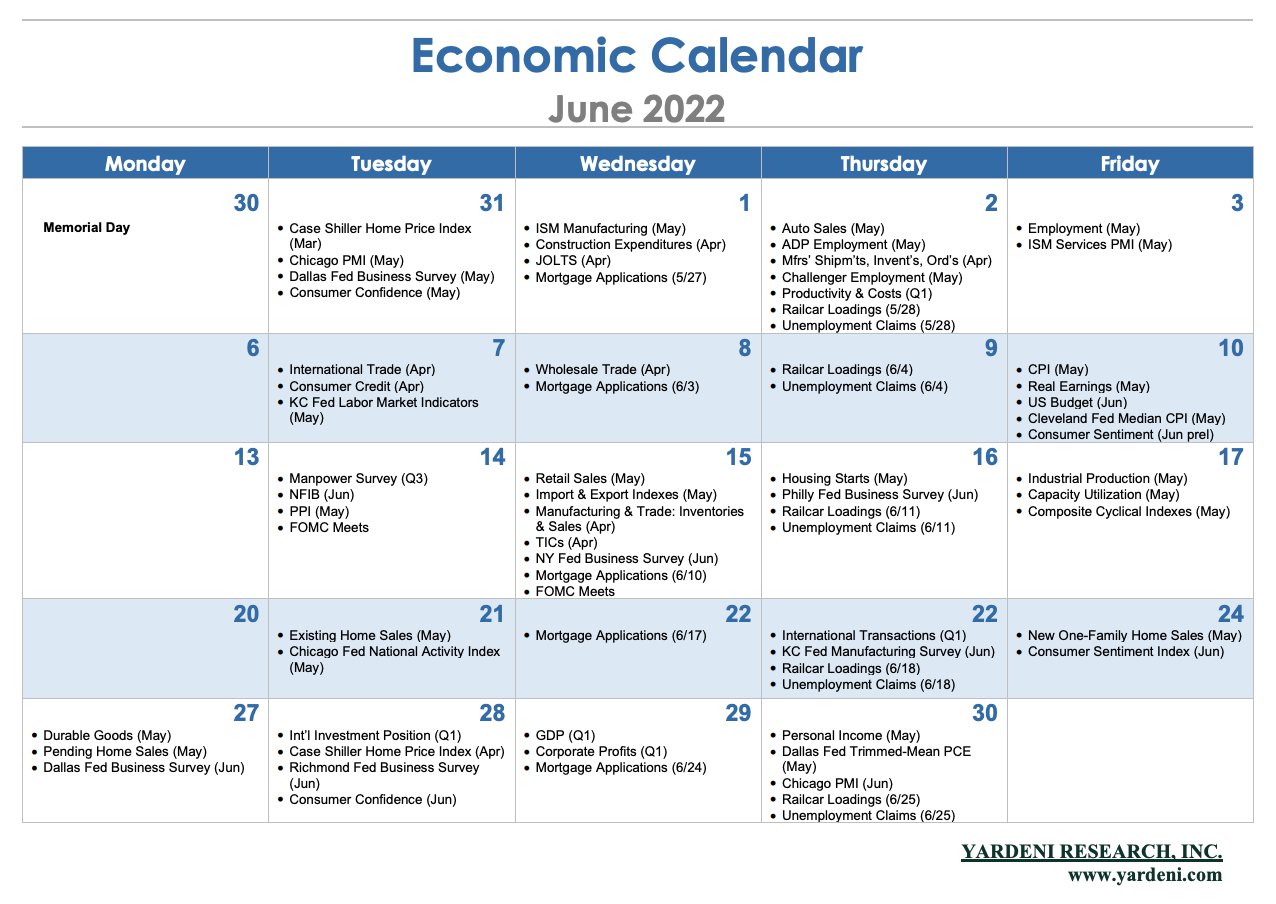The week ahead is jam packed with June regional and national economic surveys. They are likely to confirm that we live in stagflationary times. Key consumer indicators are likely to show that Americans are spending less on goods, more on services, and much more on everything because of inflation. More specifically:
(1) Among the biggies will be the national M-PMI on Friday, which is the first day of July. It is likely to be down sharply from May's 56.1, closer to the territory below 50.0 indicative of a contraction. That’s what’s suggested by the three (of five) regional Federal Reserve Bank (FRB) business surveys we have so far for June. On Monday and Tuesday, the other two district FRBs that conduct such surveys, the Dallas and Richmond FRBs, will round out the list. In addition to weakening economic activity, the business surveys are likely to show that supply-chain problems are continuing to abate, while inflationary pressures remain elevated nonetheless.
(2) On Monday, May’s durable goods report is likely to indicate slower growth in capital spending, which tends to be driven by the pace of overall GDP and corporate profits. The latter two’s Q1 revisions will be released on Wednesday.
(3) On Tuesday, June’s Consumer Confidence Index should confirm that consumers are depressed, but not as much as shown this past Friday by the record low in the Consumer Sentiment Index. On Thursday, personal income data are likely to show that inflation continues to erode the purchasing power of Americans, forcing them to save less.
(4) All of the above raise the risk that the Atlanta Fed’s GDPNow tracking model, which is currently showing no growth during Q2, will fall into negative territory this week. Real GDP fell 1.5% during Q1. It is widely (and wrongly) believed that two consecutive negative quarters of real GDP growth mark a recession. It is actually up to the Dating Committee of the National Bureau of Economic Analysis to make recession calls.
We are still putting the odds of an outright (earnings-depressing) recession at 45%. However, the economy is currently certainly mired in a mid-cycle growth recession.



